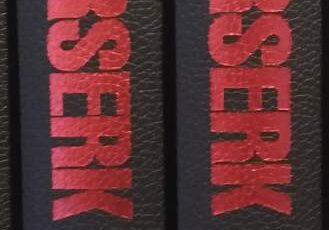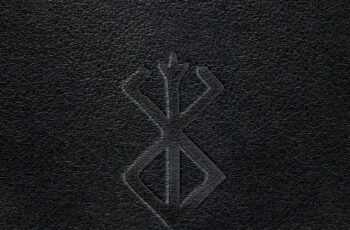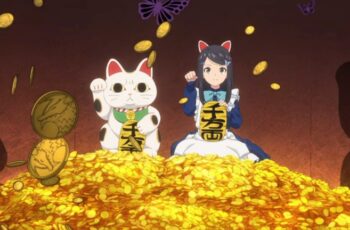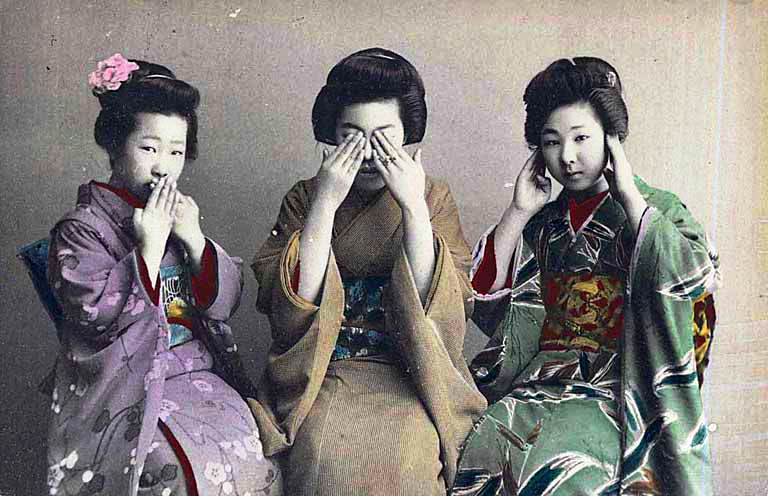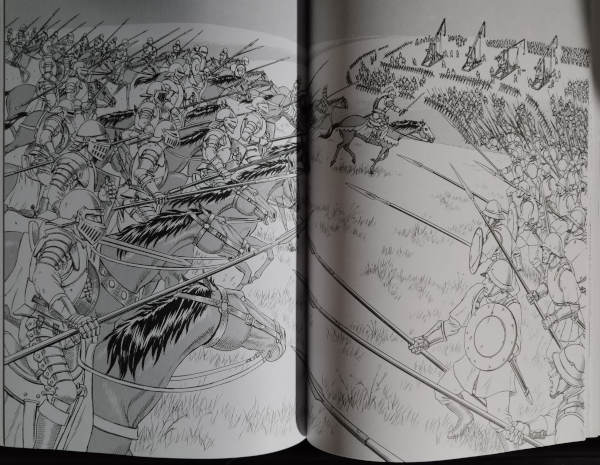
Berserk Deluxe Volume 2 covers the “Golden Age”, “Nosferatu Zodd”, and other arcs. As fans of the series told me, Berserk hits its stride with the “Golden Age”, but I didn’t find Guts to be the reason. Griffith steals the show in this arc. He presents a good foil for Guts. Griffith is a bundle of contradictions: genteel yet savage, courtly yet an everyman, manipulative yet caring. He looks to the future. Contrast him with Guts who is damaged, intelligent yet doesn’t use that intelligence, uncouth, closed. Guts looks to his terrible past, which the “Golden Age” opens with. Griffith and Guts provide interesting character dynamics, but Griffith’s complexity wins over Guts in the arc. Griffith has a dream; Guts isn’t even certain if he wants to live. Gut’s past falls square into a common dark-fantasy character template. I first encountered the template with Terry Goodkind’s Richard Rahl in Wizard’s First Rule. Later, Terry Brook’s Grianne Ohmsford became my favorite fantasy character, although Brooks isn’t direct about the physical, mental, and sexual abuse Grianne endured. He leaves that up to reader interpretation. The template existed long before these books and Berserk. Guts’s difficulties with connection keeps with the template, and the problem is well-handled in “Golden Age”. Guts, ever so slowly, begins to heal in his service to Griffith.
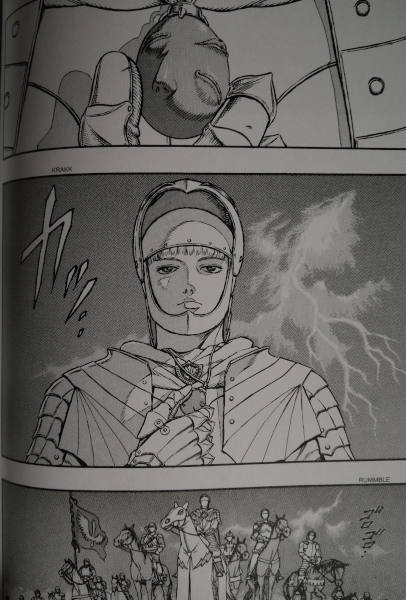
However, I still find Guts tiresome as a character compared to Griffith and Casca. But then, I find less thoughtful characters tiresome no matter the genre. Manga has a theme of raw tenacity carrying people through. Guts falls into this theme, but interestingly, his tenacity leads to his frequent failures. Despite this, he doesn’t learn or adjust his approach, even if it is just learning a different fighting technique. This may appear later in the series, but so far, Guts remains a meathead in this story collection, to his character’s detriment. A more interesting route, which may yet happen since I haven’t read Volume 3 when I wrote this review, would be for Guts to take on more strategic and tactical thinking like Griffith thinks, and Griffith to fall more into the barbarism Guts favors. How they would follow this intersecting change would prove interesting. I can only judge a story on its current story threads.
Casca also overshadowed Guts, and I wished she had more development in this volume. The chapters that examined her backstory were interesting. A female mercenary offers an interesting story focused on trying to fit-in and never succeeding in a violent, male-dominated world. The difficulties are hinted at when a painful period (perhaps endometriosis) hurts her ability to fight. The scene contrasts her vulnerability and inner strength against Guts’s physical strength and inner vulnerability. Guts serves best as character that accents or contrasts the characters around him. Throughout my read of this volume, it struck me how Guts isn’t a protagonist as much as a supporting cast-member for the more complex and, frankly, more interesting characters. Casca is also quite intelligent, and, as a military leader, able to carry a story in her own right. She displays flexibility and adaptability that Guts lacks–another example of how Guts provides a contrasting backdrop for the other characters. Casca’s scenes as Griffith moves up the social ranks shows her inner conflict about the situation well. Guts, on the other hand, doesn’t bother to even attempt to think the political situation through. Casca is a soldier and understands she has social limitations. Guts doesn’t care about the social limitations. While this reveals the artificial nature of social rank, Casca’s conflict over the social limitations does a better job at pointing to this artificiality.
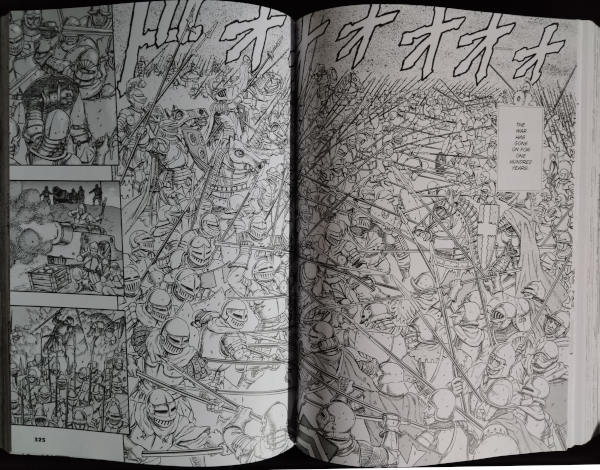
The world of Berserk becomes more vivid in its social structure in this volume. Miura seems to have spent time studying arms and armor. The breastplates and helms have impressive detail and accuracy. I found some of the “monster soldier” designs amusing with their exaggerated features. Their spherical heads and helmets often look more like a girdle than a helmet. It’s a creative use of a different armor piece. I will say that the leg designs of the armor jarred me. They don’t match what I know of armor designs. This is a minor quibble, but these problems jumped out because of the accuracy the majority of the artwork shows. Speaking of the artwork, many of the battle scenes take on Renaissance and Romantic compositions. They capture the clash of movement of battle well. The level of detail in these panels is impressive. We only see hints of the political workings that drive these battles, which keeps the tension and threat going.
Now, I know I’m hard on Guts. He has potential to develop into an interestingly complex character, but in this volume, he is overshadowed by Griffith and Casca. Again, he works well as a foil for both of them, but main characters shouldn’t act as a supporting cast member. This may be more due to my perspective than the story. I find characters like Guts tiresome and dull. I like Guts the most when he shows development, such as his caretaking of Casca or the scene where he’s troubled about a mission that goes awry. He then covers this development and inner vulnerability with external violence, which is realistic for his character. I find his lack of reflection, which is a good foil to Casca who shows a lot of self-reflection, the most tired aspect of his character. Perhaps because I’ve seen this problem often in shonen stories. Characters who reflect, aim at changing, and fail at changing interest me more than characters that only avoid. Don’t get me wrong, avoidance behavior is normal and realistic–and more common than reflective behavior. Guts’s nightmare scenes point toward his need to do some inner work and how he isn’t equipped to do so. He’s a trapped character, which is fine and interesting for a time, but he’s shown little effort to try to free himself. Running from problems remains interesting so long as some progress is made or foreshadowed.
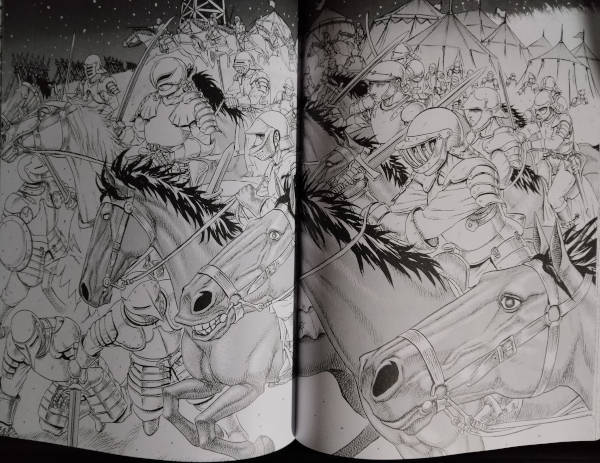
Terry Brooks’s Grianne provides a good example of how a character can be trapped but incrementally learn self-reflection skills. The forward-backward mechanics provide a lot of drama and tension, leading up to the breaking point. Guts does show this same dynamic, but, so far, I don’t find his forward-backward mechanics compelling. I enjoy the story and look forward to reading more, but Guts is the weakest link in it so far, with Griffith and Casca standing out as more complex and interesting. I hope Guts will awaken and become more interesting and less of a blunt instrument.
I enjoyed my read of Berserk Deluxe Volume 2 more than the first volume. Griffith and Casca steal the show. The artwork and especially the armor designs have improved. Miura definitely hit his stride. The battle panels could make excellent oil paintings! I can see why Berserk has avid fans. While the story doesn’t present anything I haven’t read or seen before, the combination of the artwork and a solid dark-fantasy makes for a fun read. There’s a lot going on with the characters. Despite how I beat up on Guts, he offers more complexity than many characters. I had hoped to have seen more progress than this volume showed him having. He has shown some, but his meatheaded behavior gets under my skin. That has more to do with my preferences than with the story. “The Golden Age” arc offers a better beginning than what I had read in Volume 1. If you enjoy dark-fantasy, Berserk offers a good read.
